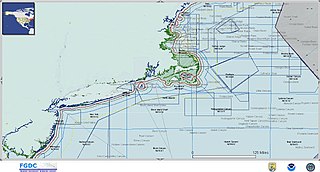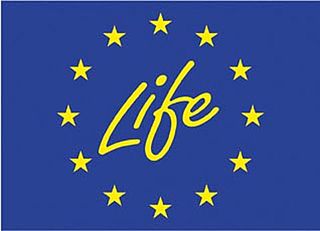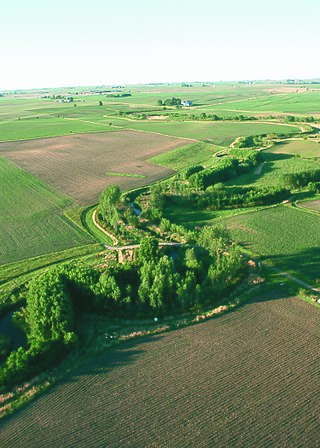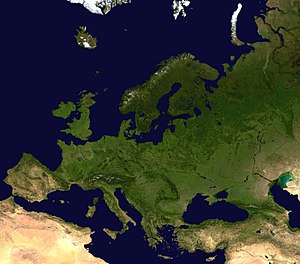
Environmental laws are laws that protect the environment. Environmental law is the collection of laws, regulations, agreements and common law that governs how humans interact with their environment. This includes environmental regulations; laws governing management of natural resources, such as forests, minerals, or fisheries; and related topics such as environmental impact assessments. Environmental law is seen as the body of laws concerned with the protection of living things from the harm that human activity may immediately or eventually cause to them or their species, either directly or to the media and the habits on which they depend.

Natural capital is the world's stock of natural resources, which includes geology, soils, air, water and all living organisms. Some natural capital assets provide people with free goods and services, often called ecosystem services. All of these underpin our economy and society, and thus make human life possible.

Natura 2000 is a network of nature protection areas in the territory of the European Union. It is made up of Special Areas of Conservation and Special Protection Areas designated under the Habitats Directive and the Birds Directive, respectively. The network includes both terrestrial and Marine Protected Areas.

Ecosystem services are the various benefits that humans derive from healthy ecosystems. These ecosystems, when functioning well, offer such things as provision of food, natural pollination of crops, clean air and water, decomposition of wastes, or flood control. Ecosystem services are grouped into four broad categories of services. There are provisioning services, such as the production of food and water. Regulating services, such as the control of climate and disease. Supporting services, such as nutrient cycles and oxygen production. And finally there are cultural services, such as spiritual and recreational benefits. Evaluations of ecosystem services may include assigning an economic value to them.

Environmental Impact assessment (EIA) is the assessment of the environmental consequences of a plan, policy, program, or actual projects prior to the decision to move forward with the proposed action. In this context, the term "environmental impact assessment" is usually used when applied to actual projects by individuals or companies and the term "strategic environmental assessment" (SEA) applies to policies, plans and programmes most often proposed by organs of state. It is a tool of environmental management forming a part of project approval and decision-making. Environmental assessments may be governed by rules of administrative procedure regarding public participation and documentation of decision making, and may be subject to judicial review.

Environmental planning is the process of facilitating decision making to carry out land development with the consideration given to the natural environment, social, political, economic and governance factors and provides a holistic framework to achieve sustainable outcomes. A major goal of environmental planning is to create sustainable communities, which aim to conserve and protect undeveloped land.

Green infrastructure or blue-green infrastructure refers to a network that provides the “ingredients” for solving urban and climatic challenges by building with nature. The main components of this approach include stormwater management, climate adaptation, the reduction of heat stress, increasing biodiversity, food production, better air quality, sustainable energy production, clean water, and healthy soils, as well as more anthropocentric functions, such as increased quality of life through recreation and the provision of shade and shelter in and around towns and cities. Green infrastructure also serves to provide an ecological framework for social, economic, and environmental health of the surroundings. More recently scholars and activists have also called for green infrastructure that promotes social inclusion and equity rather than reinforcing pre-existing structures of unequal access to nature-based services.

The Water Framework Directive (WFD)2000/60/EC is an EU directive to establish a framework for the protection of all water bodies (including marine waters up to one nautical mile from shore) by 2015. The WFD establishes a programme and timetable for Member States to set up River Basin Management Plans by 2009.

Marine spatial planning (MSP) is a process that brings together multiple users of the ocean – including energy, industry, government, conservation and recreation – to make informed and coordinated decisions about how to use marine resources sustainably. MSP generally uses maps to create a more comprehensive picture of a marine area – identifying where and how an ocean area is being used and what natural resources and habitat exist. It is similar to land-use planning, but for marine waters.

The LIFE programme is the European Union's funding instrument for the environment and climate action. The general objective of LIFE is to contribute to the implementation, updating and development of EU environmental and climate policy and legislation by co-financing projects with European added value. LIFE began in 1992 and to date there have been five phases of the programme. During this period, LIFE has co-financed some 4600 projects across the EU, with a total contribution of approximately 6.5 billion Euros to the protection of the environment and of climate. For the next phase of the programme (2021–2027) the European Commission proposed to raise the budget to 5.45 billion Euro.

The World Database on Protected Areas (WDPA) is the largest assembly of data on the world's terrestrial and marine protected areas, containing more than 260,000 protected areas as of August 2020, with records covering 245 countries and territories throughout the world. The WDPA is a joint venture between the United Nations Environment Programme World Conservation Monitoring Centre and the International Union for Conservation of Nature World Commission on Protected Areas.

The Vindel River is a river in northern Sweden. It is a tributary to Ume River and the biggest tributary river in Sweden. It lends its name to the Vindelfjällens Nature Reserve, one of the largest protected areas in Europe, totaling 562,772 ha. Since it is partially located within the reserve, it is permanently protected from hydroelectric development. Downstream from where Vindelälven merges with Umeälven Sweden's largest hydropower plant is located. Considering that the river is not unregulated all the way to the ocean, but just in the part of it formally called Vindelälven, the decision to call it "unregulated" or "permanently protected from hydropower" is to be taken with a grain of salt. The river Vindel and its tributaries were important routes for transporting timber in northern Sweden, up until 1976. To ease the movement of logs downstream, wooden dams were constructed, side streams were cut off and tributaries were straightened and cleared. These changes significantly affected the river ecosystem and populations of wild fish, mammals, mussels and other species of aquatic and riparian habitats. The changes therefore negatively impact the favourable conservation status of species and habitats within the Vindel River Natura 2000 network site. Actions to restore the tributaries of the Vindel River to a more natural state are considered a priority by the Swedish environmental protection agency, the Västerbotten county administrative board, and the EU under the Habitats Directive and the Water Framework Directive (WFD). The general objective of the Vindel River LIFE project was to achieve a ‘good status’ for the waters of the Vindel River with reference to the Water Framework Directive, and ‘good conservation status’ for the species in the project area under the Habitats Directive. The aim was to reduce the negative impacts of fragmentation and channelisation caused by timber-floating infrastructure in tributaries of the Vindel River system. The work was focused on a number of river stretches, altogether spanning just over 44 km, with the aim of removing 73% of the obstructions to natural river flow, placing large boulders and fallen trees in the water to simulate natural conditions and to reconnect streams to the tributaries to open up breeding areas for migrating fish. The Vindel River LIFE project restored streams in the tributaries of the Vindel River basin, by removing timber-floating infrastructure, replacing large obstacles into the water, and creating and restoring fish spawning grounds. These ecosystem restoration measures resulted in improved water quality, and improvements in conditions for protected species, in line with national and EU policy. The project’s work had clear socio-economic benefits in the project area.

The European Centre for Nature Conservation (ECNC) was a Dutch non-profit foundation which was active in the field of European nature and biodiversity policy between 1993 and 2017. It was set up as a network of university departments, expert centres and government agencies and operated as a European biodiversity expertise centre. The organization promoted sustainable management of natural resources and biodiversity, and aimed to stimulate interaction between science, society and policy.
Soil governance refers to the policies, strategies, and the processes of decision-making employed by nation states and local governments regarding the use of soil. Globally, governance of the soil has been limited to an agricultural perspective due to increased food insecurity from the most populated regions on earth. The Global Soil Partnership, GSP, was initiated by the Food and Agriculture Organization (FAO) and its members with the hope to improve governance of the limited soil resources of the planet in order to guarantee healthy and productive soils for a food-secure world, as well as support other essential ecosystem services.

The European Union (EU) Environmental Policy was initiated in 1973 with the "Environmental Action Programme" at which point the Environmental Unit was formed. The policy has thereafter evolved "to cover a vast landscape of different topics enacted over many decades" (Reuters) and in 2015 the Institute for European Environmental Policy estimated that "the body of EU environmental law" amounted to 500+ directives, regulations and decisions.
"Over the past decades the European Union has put in place a broad range of environmental legislation. As a result, air, water and soil pollution has significantly been reduced. Chemicals legislation has been modernised and the use of many toxic or hazardous substances has been restricted. Today, EU citizens enjoy some of the best water quality in the world"
Cumulative effects, also referred to as cumulative environmental effects and cumulative impacts, can be defined as changes to the environment caused by the combined impact of past, present and future human activities and natural processes. Cumulative effects to the environment are the result of multiple activities whose individual direct impacts may be relatively minor but in combination with others result are significant environmental effects. The multiple impacts of different activities may have an additive, synergistic or antagonistic effect on one another and with natural processes. Cumulative effects can be difficult to predict and manage due to inadequate environmental baseline data, complex ecological processes, and the large scale at which human development occurs.
Institute for Environmental Solutions (IES) is a non-profit research organization in Latvia that utilizes airborne remote sensing technologies and creates multidisciplinary teams to design and develop innovative environmental solutions. IES is a network-based organization which brings together scientists, artists, engineers and specialists from Latvia and abroad.

Nature-based solutions describe the development and use of nature (biodiversity) and natural processes to address diverse socio-environmental issues. These issues include climate change mitigation and adaptation, human security issues such as water security and food security, and disaster risk reduction. The aim is that resilient ecosystems provide solutions for the benefit of both societies and biodiversity. The 2019 UN Climate Action Summit highlighted nature-based solutions as an effective method to combat climate change. For example, nature-based systems for climate change adaptation can include natural flood management, restoring natural coastal defences, and providing local cooling.
The Danube Strategy of the European Union aimed at closer cooperation between the states along the Danube. The focus is on the areas of infrastructure, environmental protection, wealth creation and good governance.

Denmark consists of the northern part of the Jutland peninsula and an archipelago of 406 islands bordering both the Baltic Sea and North Sea, and has substantial maritime influence. This prominence is attributed to its expansive coastline, which is the 17th longest in the world, alongside a sizeable Exclusive Economic Zone and role as an Arctic power. Denmark is also home to Mærsk, the world's second largest shipping company and Ørsted, an industry leader in offshore wind, and ranks as the fifth largest seafaring nation in the world[When?].

















